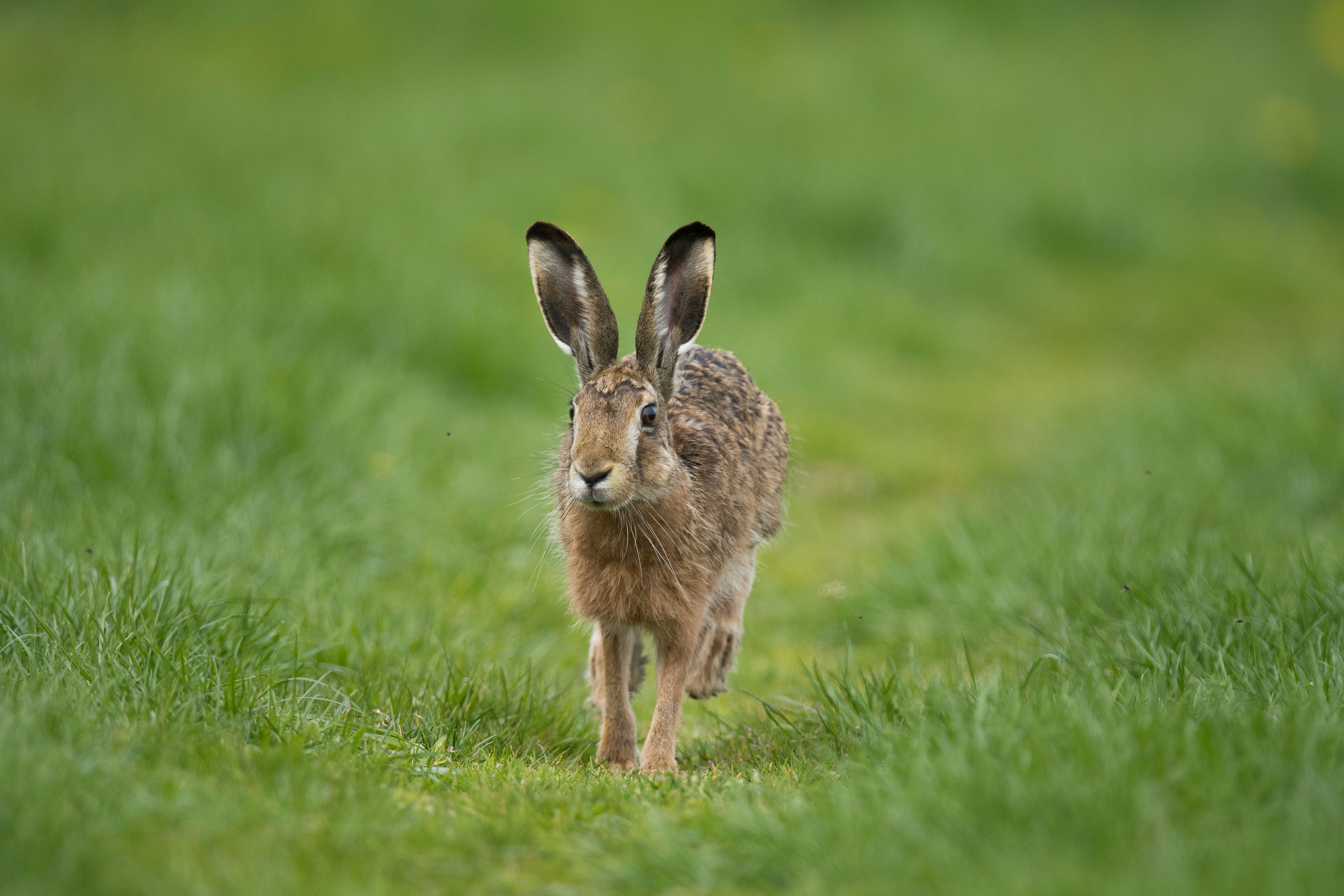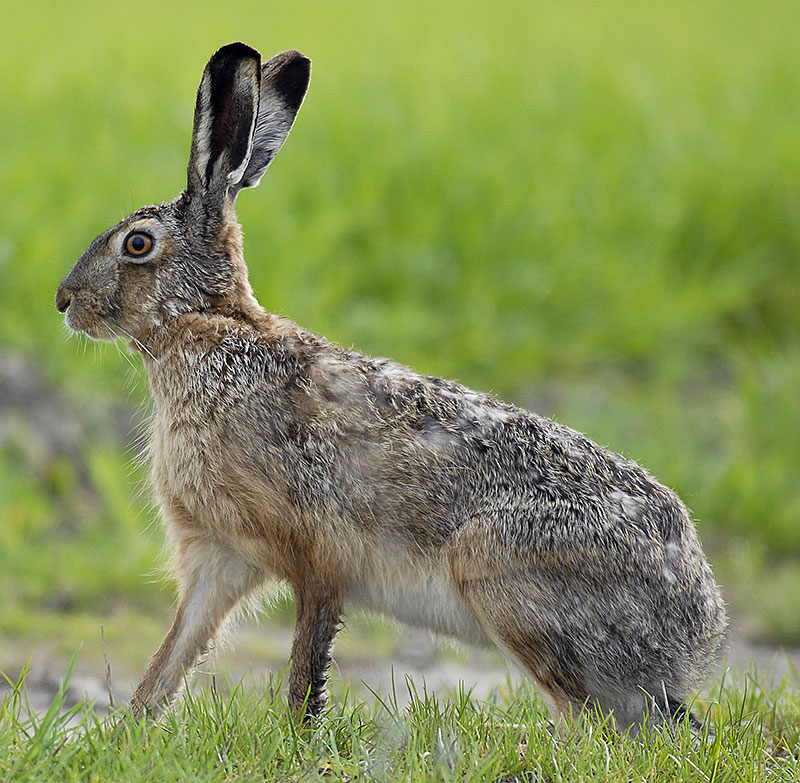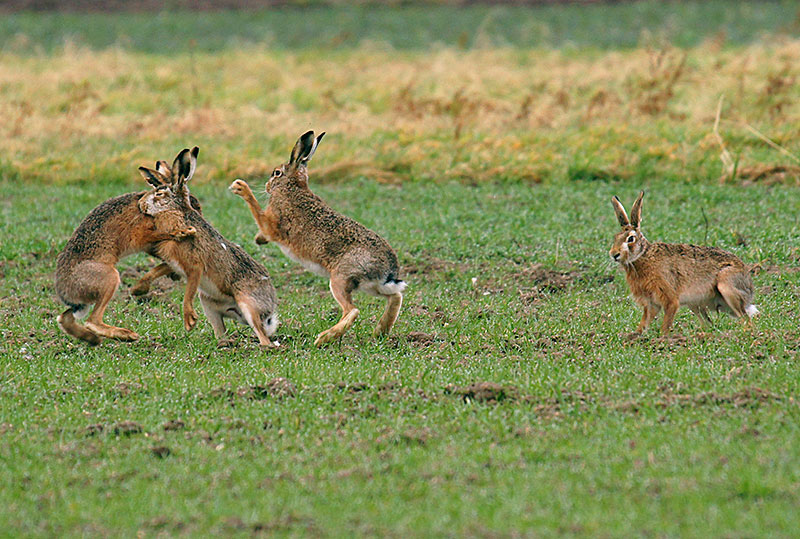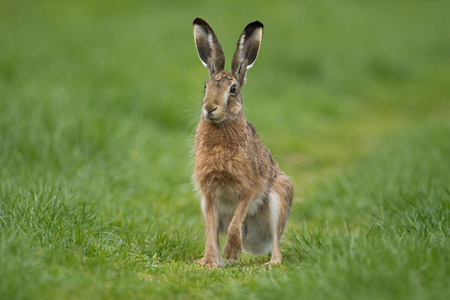The European hare (Lepus europaeus) has a high birth rate. Hare populations across wide swathes of Europe nevertheless continue to be on the decline. Many studies indicate however that it is possible to increase the population density of hares again by implementing comparatively simple measures.
Facts on the European hare:
Head-body length | 43 - 70 cm |
Body height | 11 - 15 cm |
Tail (scut) | 6 – 13 cm; |
Ears (elongated) | 9 – 13 cm; with black tips |
Fur colour on back | Ochre to brownish red |
Fur colour on underside | Creamy white |
Weight | 2.5 - 6.5 kg |
Range
Relatively speaking a warmth-loving species, the European hare lives in open and semi-open landscapes, such as agricultural land with hedges and shrubs, steppe landscapes and dunes, and sparse forests. It is widespread from France in the west, to south-western Siberia and north-western Mongolia, and from north to south its range extends from Denmark and Finland down as far as northern Italy and southern Greece. The European hare is replaced on the Iberian peninsula by the smaller Iberian hare (Lepus granatensis). In terms of biology and lifestyle, the two species are very similar.
Reproduction
The females or does are fertile from January to September in central Europe. The clear peak in reproductive activity is however in the spring month of April. As soon as the male hare, the buck, discovers a doe, he chases wildly after her. Once the doe has had enough of the chase, she stands upright and “boxes” the ears of her brash suitor, while he fights back. Often, several bucks will chase one doe (Fig. 2). In the end it is the doe who determines the time and duration of the copulation.
After a gestation period lasting 42 to 43 days, the doe produces a litter of usually between one and four, very occasionally six fully developed offspring. The leverets are born fully furred and able to see, and they are precocial, being ready to leave the nest soon after birth. The female hares may have three to four litters in a year. Superfoetation or superfecundation also contributes to the high birth rate among hares. This means that a further impregnation is possible during an existing pregnancy.
Decline in population
Despite the high birth rate, hare populations across wide swathes of Europe continue to be on the decline. The main reason is probably intensive agriculture, especially the cultivation of cereals in fields of ever increasing size. Fringe areas, areas of wild grasses, herbs and weeds and shrubland are disappearing, and fallow areas are on the decrease. However, the climate, the prevailing soil type, and the land-use associated with them also play a role in the differences in population density.
The European hare is a herbivore that is dependent on having a wide variety of plant species available. Particularly in the spring and summer, wild herbs on agricultural fields are important sources of forage. Hares are selective eaters and prefer to eat wild herbs such as red clover, achillea, red fescue and the common daisy. In today’s agricultural landscape, predators also have a negative influence on a local basis on the population density.
Support measures
The European hare benefits if the diversity of cultivars and structures in open countryside are increased, or farming is extensified on a local basis. Fallow areas play an important role here, as these improve both cover and the availability of forage considerably. The hare has benefitted for centuries from a mosaic-like agricultural landscape consisting of small fields with a large number of different crops, interspersed by hedgerows. Hare population densities can be increased again through the establishment of fallow areas.



